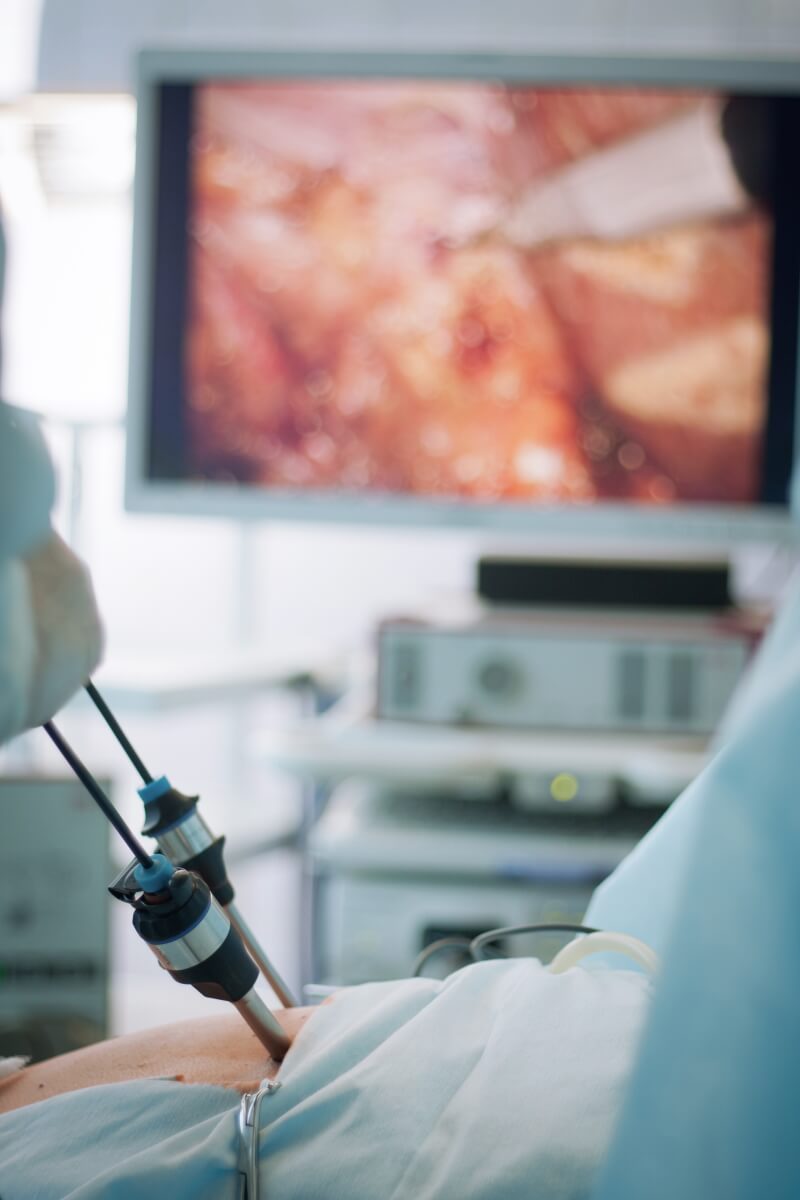Operations
Laparoscopy
Laparoscopy is a minimally invasive method used to examine the interior of the abdomen, pelvic cavity and other parts of the body. While laparoscopy can be used to aid in diagnoses, it is also frequently used to perform surgical procedures. A laparoscopy can be used an outpatient procedure and general anesthetic is usually used. More complex procedures, such as a laparoscopic hysterectomy, may require an overnight stay in the hospital.
As a diagnostic tool, laparoscopy is often used to investigate the causes of gynecological pain such as endometriosis, ovarian cysts and tumors, or to discover and treat ectopic pregnancy.
As a surgical tool, laparoscopy is most commonly used for removal of endometriosis, ovarian cysts, fibroids, to perform sterilization in female patients, or to assist in hysterectomy.
Performing laparoscopy usually only requires two to four tiny incisions. One incision is made just below the navel, and another is usually made near the bikini line. For organ removal, additional incisions may be required on either side of the abdomen. Complications after laparoscopic surgery are rare. Most people recover quickly and resume their normal activities without problems.


